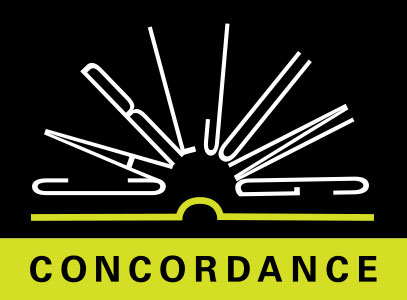The hero-myth is an unconscious drama seen only in projection, like the happenings in Plato's parable of the cave:
The hero himself appears as a being of more than human stature. He is distinguished from the very beginning by his godlike characteristics
CW5 ¶ 612ARCHETYPE OF THE SELF
Since he is psychologically an archetype of the Self, his divinity only confirms that the Self is numinous, a sort of god, or having some share in the divine nature
CW5 ¶ 612PROTAGONIST OF
GOD'S TRANSFORMATION
The hero is the protagonist of God's transformation in man; he corresponds to what I call the “mana personality.” The mana personality has such an immense fascination for the conscious mind that the ego all too easily succumbs to the temptation to identify with the hero, thus bringing on a psychic inflation with all its consequences. For this reason the repugnance felt by certain ecclesiastical circles for the “inner Christ” is understandable enough, at least as a preventive measure against the danger of psychic inflation which threatens the Christian European
CW5 ¶ 612WANDERING LIKE THE SUN
Heroes are usually wanderers, and wandering is a symbol of longing, of the restless urge which never finds its object, of nostalgia for the lost mother. The sun comparison can easily be taken in this sense: the heroes are like the wandering sun, from which it is concluded that the myth of the hero is a solar myth
CW5 ¶ 299UNQUENCHABLE DESIRE FOR LIGHT
It seems to us, rather, that he is first and foremost a self-representation of the longing of the unconscious, of its unquenched and unquenchable desire for the light of consciousness. But consciousness, continually in danger of being led astray by its own light and of becoming a rootless will o' the wisp, longs for the healing power of nature, for the deep wells of being and for unconscious communion with life in all its countless forms
CW5 ¶ 299PERSONIFICATIONS OF THE LIBIDO
It is not man as such who has to be regenerated or born again as a renewed whole, but, according to the statements of mythology, it is the hero or god who rejuvenates himself. These figures are generally expressed or characterized by libido-symbols (light, fire, sun, etc.), so that it looks as if they represented psychic energy. They are, in fact, personifications of the libido
CW5 ¶ 388TREASURE HARD TO ATTAIN
The hero is a hero just because he sees resistance to the forbidden goal in all life's difficulties and yet fights that resistance with the whole-hearted yearning that strives towards the treasure hard to attain, and perhaps unattainablea yearning that paralyses and kills the ordinary man
CW5 ¶ 510INHABITED BY A DAEMON
The hero is an extraordinary being who is inhabited by a daemon, and it is this that makes him a hero. That is why the mythological statements about heroes are so typical and so impersonal
CW5 ¶ 536NEW-BORN FROM THE DARKNESS
The treasure which the hero fetches from the dark cavern is life: it is himself, new-born from the dark maternal cave of the unconscious where he was stranded by the introversion or regression of libido. Hence the Hindu fire-bringer is called Matarisvan, he who swells in the mother. The hero who clings to the mother is the dragon, and when the hero is reborn from the mother he becomes the conqueror of the dragon (fig. 258.59a)
CW5 ¶ 58084 CW5 Ser: 19 Par 580 (i) FigNo 258.59a
PARADOXICAL NATURE
OF THE SNAKE
He [the hero] shares this paradoxical nature with the snake. According to Philo the snake is the most spiritual of all creatures; it is of a fiery nature, and its swiftness is terrible. It has a long life and sloughs off old age with its skin. In actual fact the snake is a cold-blooded creature, unconscious and unrelated. It is both toxic and prophylactic, equally a symbol of the good and bad daemon (the Agathodaimon), of Christ and the devil. Among the Gnostics it was regarded as an emblem of the brain-stem and spinal cord, as is consistent with its predominantly reflex psyche. It is an excellent symbol for the unconscious, perfectly expressing the latter's sudden and unexpected manifestations, its painful and dangerous intervention in our affairs, and its frightening effects
CW5 ¶ 580FAVORABLE AND UNFAVORABLE
ACTION OF THE UNCONSCIOUS
Taken purely as a psychologem the hero represents the positive, favourable action of the unconscious, while the dragon is its negative and unfavourable actionnot birth, but a devouring; not a beneficial and constructive deed, but greedy retention and destruction. (cf. fig. 035) and (fig. 030)
CW5 ¶ 58085 CW5 Ser: 25.1 Par 580 (k) FigNo 035
86 CW5 Ser: 25.2 Par 580 (k) FigNo 030
RENEWING THE WORLD
The hero who sets himself the task of renewing the world and conquering death personifies the world-creating power which, brooding on itself in introversion, coiled round its own egg like a snake, threatens life with its poisonous bite, so that the living may die and be born again from the darkness
CW5 ¶ 592SACRIFICER AND SACRIFICED
The hero is himself the snake, himself the sacrificer and the sacrificed, which is why Christ rightly compares himself with the healing Moses-serpent (fig. 258.09b) and why the saviour of the Christian Ophites was a serpent, too. It is both Agathodaimon (fig. 037) and Cacodaimon. In German legend we are told that the heroes have snake's eyes
CW5 ¶ 59387 CW5 Ser: 29 Par 593 (m) FigNo 258.09b
88 CW5 Ser: 29.2 Par 593 (m) FigNo 037
